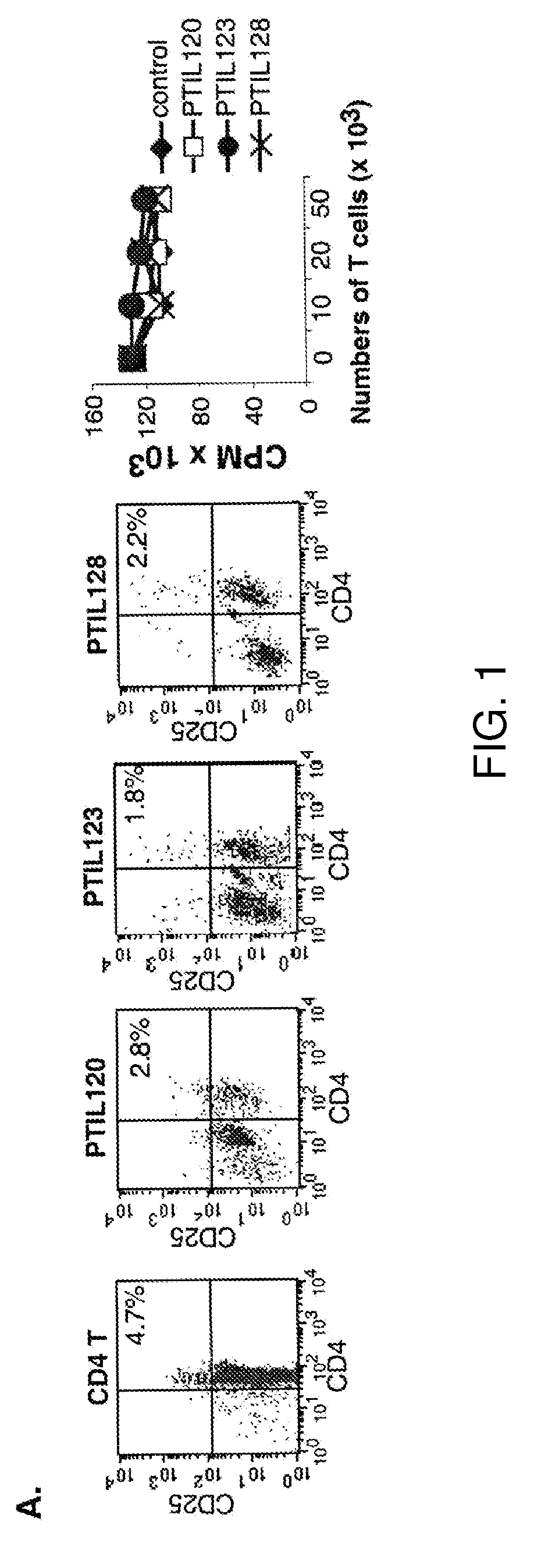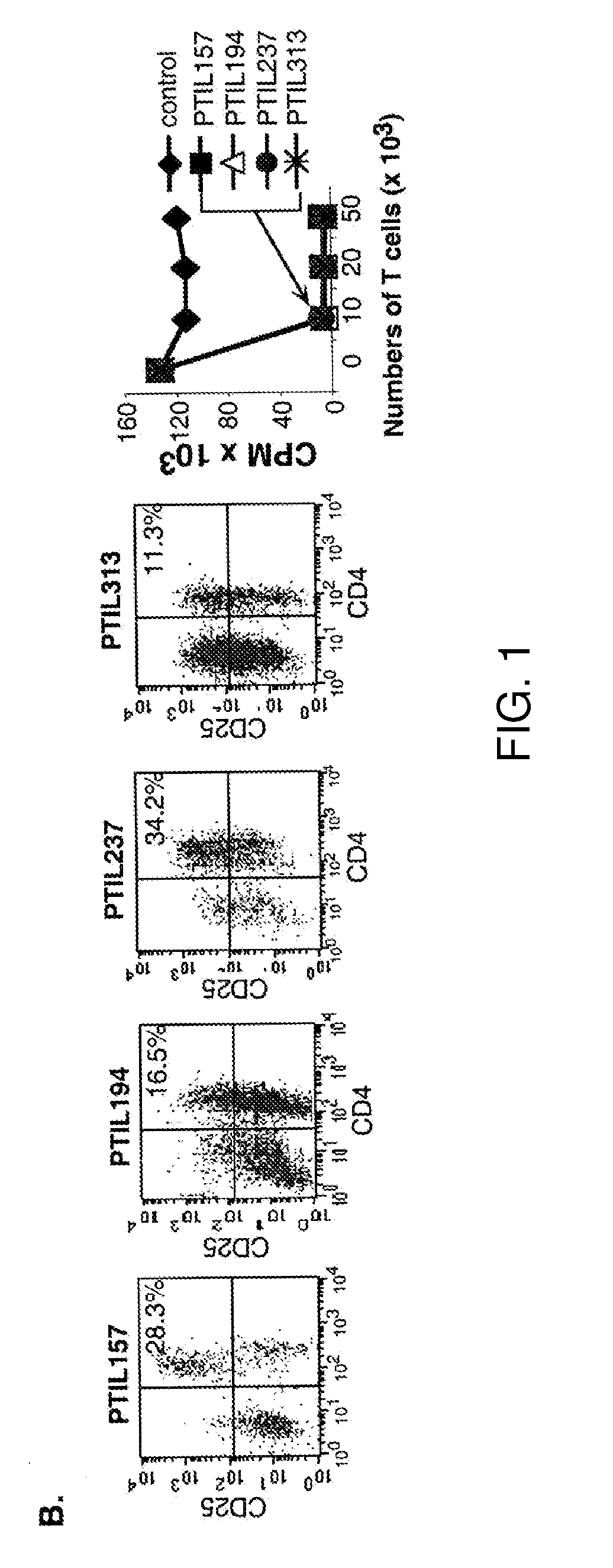Reversal of the suppressive function of specific t cells via toll-like receptor 8 signaling
- Summary
- Abstract
- Description
- Claims
- Application Information
AI Technical Summary
Benefits of technology
Problems solved by technology
Method used
Image
Examples
specific embodiments
[0068] Naïve CD4+ T cells were purified from PBMCs by using microbeads (Miltenyi Biotec). Naïve CD4+ T cells (105 / well) were cultured with regulatory T cells at a ratio of 10:1 in OKT3 (2 μg / ml)-coated, U bottomed 96-well plates containing the following TLR ligands. LPS (100 ng / ml), imiquimod (10 μg / ml), loxoribine (500 μM), poly (I:C) (25 μg / ml), ssRNA40 / LyoVec (3 μg / ml), ssRNA33 / LyoVec (3 μg / ml), pam3CSK4 (200 ng / ml) and flagellin (10 μg / ml), all purchased from Invivogene (San Diego, Calif.). CpG-A (3 μg / ml), CpG-B (3 μg / ml) and poly-G3 oligonucleotides (3 μg / ml) were synthesized by Integrated DNA Technologies (Coralville, Iowa). All experiments were performed at least more than once.
[0069] Pharmaceutical Preparations
[0070] Pharmaceutical compositions of the present invention comprise an effective amount of one or more Treg cell activity-suppressing agent (which may be any kind of molecule, but in specific embodiments is a TLR8 ligand, and in further specific embodiments is an o...
example 1
Regulatory T Cells in Prostate Cancer
[0146] Increased percentages of CD4+ CD25+ Treg cells have been found in several types of cancers (Woo et al., 2001; Curiel et al., 2004), but very little is known about Treg cells in human prostate cancer. The inventors therefore established 52 TIL cell lines from 200 prostate tumor samples, maintained them in culture for at least 3-4 weeks to obtain enough number of cells for further analysis. FACS analysis of 22 TIL lines identified two discrete subsets based on the expression of CD4 and CD25 molecules. Six (28%) of 22 TILs contained less than 5% CD4+ CD25+ T cells in the total T-cell population, and did not produce a suppressive effect on naïve T cell proliferation, while the remaining 16 TILs (72%), including PTIL157, PTIL194, PTIL237 and PTIL313, contained elevated percentages (11-34%) of CD4+ CD25+ T cells in the total T-cell population, and showed a potent ability to suppress naïve T cell proliferation. Representative data are shown in F...
example 2
Suppression of Naïve T Cell Proliferation by CD4+ and CD8+ Treg Cell Lines / Clones Derived from Exemplary Prostate Tumor-Derived Til Cell Lines
[0148] To determine the subsets of Treg cells responsible for the observed suppression of naïve T cell proliferation, 4 bulk TIL cell lines (PTIL157, PTIL194, PTIL237 and PTIL313) were selected for further analysis. CD4+ and CD8+ T-cell subpopulations were purified from bulk T cell lines with anti-CD4 or anti-CD8 antibody-coated magnetic beads and tested for their ability to inhibit the proliferation of naïve CD4+ T cells. As expected, CD4+ T-cell population showed a marked suppressive effect; however, CD8+ T populations isolated from 4 TILs were suppressive, indicating that the purified CD8+ T-cell population contained CD8+ Treg cells.
[0149] To demonstrate the co-existence of CD4+ and CD8+ Treg cells in prostate cancer-derived TILs, T cell clones were generated from PTIL194 by limiting dilution cloning. More than 100 T-cell clones were obta...
PUM
| Property | Measurement | Unit |
|---|---|---|
| Electrical resistance | aaaaa | aaaaa |
| Therapeutic | aaaaa | aaaaa |
| Sensitivity | aaaaa | aaaaa |
Abstract
Description
Claims
Application Information
 Login to View More
Login to View More - R&D
- Intellectual Property
- Life Sciences
- Materials
- Tech Scout
- Unparalleled Data Quality
- Higher Quality Content
- 60% Fewer Hallucinations
Browse by: Latest US Patents, China's latest patents, Technical Efficacy Thesaurus, Application Domain, Technology Topic, Popular Technical Reports.
© 2025 PatSnap. All rights reserved.Legal|Privacy policy|Modern Slavery Act Transparency Statement|Sitemap|About US| Contact US: help@patsnap.com



